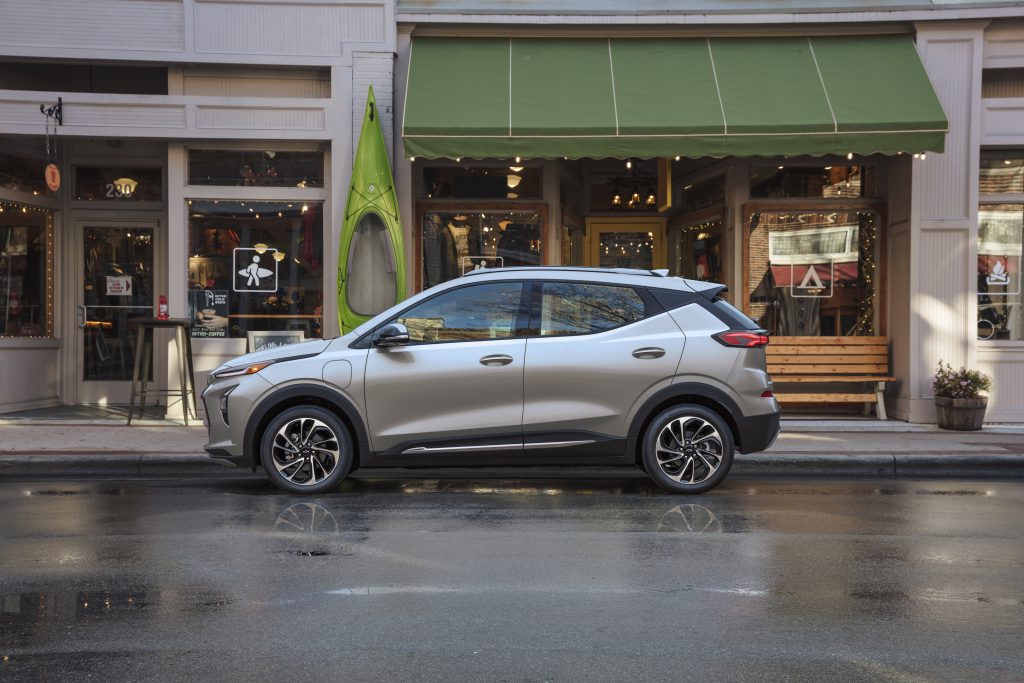Mispricing the Chevrolet Bolt, And Other Strange Corporate Decisions
In my research around power grids and next-generation infrastructure, I’m spending a lot of time thinking about the concept of market failure. The term refers to transactional outcomes that are not economically optimal. It’s a somewhat nerdy term, yes. But it comes up a lot in conversations about infrastructure specifically because it often refers to economically less-than-optimal things that have bad consequences (a.k.a. “social costs” or “externalities”). But the idea of economic inefficiency that doesn’t necessarily create much in the way of quantifiable externalities comes up a lot, too. Inefficiency isn’t a market failure in the common sense, but it happens all the time– in the form of “mispricing.” Companies often fail to price things correctly. And it has some implications for new product adoption. This is a huge issue when we’re thinking about electrification and electric vehicles, which are all the rage. And the Chevrolet Bolt provides a good example.
Is free media ‘mispriced’? Become a contributor today for as little as 25 cents a week!
The basics of market failure
You might ask: “Isn’t the idea of ‘correct’ pricing kind of a non-sequitur? Isn’t all pricing relative? What about the freedom to choose?!” Well, kind of! I put that in quotes because the idea of “correct” pricing really just means “economically optimal” pricing. This would mean that everyone gets what they want and there’s no waste. This is the pipe dream of all liberal economists. Adam Smith types and capitalists who believe in capitalism as the man envisioned it, or what have you. Of course, we don’t live in that fanciful realm. Capitalism in the age of neoliberal glory is inherently wasteful, and there are massive asymmetries of information.
In the most general terms, market failures can refer to negative externalities (things like pollution that are created from use of a product), demerit goods (goods that harm the user directly, like cigarettes or, say, meth), or any number of inefficiencies involving the allocation of goods, the production of goods, or the incompleteness or inaccessibility of markets. Perhaps my biggest academic beef with so-called liberal economics (a.k.a. pro-deregulation, gubmint=bad) has always been that they focus more on individual choices and individual consumer spending as participation in markets, and not enough on the role of information in markets and information asymmetries. To condense a century of white men in suits having bad ideas, there’s this idea that everyone makes rational decisions, all the time, and therefore, markets are great and the government is evil. But normal people without Harvard degrees have been saying for decades that this ish was whack. And it becomes apparent in the case of mispricing.
So, how does it work?
Let’s take a good example from home, apropos my research: The Chevrolet Bolt. Development of the the four-door hatchback began in 2012. It was announced in 2015 as the all-electric successor to the similarly-named Volt hybrid (with all-EV capability). The car got rave reviews. It was supposed to start selling in the low $30,000 range. But this accounted for a $7,500 tax credit, and retail prices were often $40-45k.
Sales were anemic.
Was this purely the fault of a lack of advertising? After all, the F150 sells for $40k, $50k, or $60k.

Complicating factors in pricing
The advertising thing certainly didn’t help. The Big Two-and-a-half spend billions of dollars on advertising. But virtually all of it goes to light trucks and SUVs. The idea that they’re killing their passenger car lineups because no one is buying them is sort of at odds with the fact that they’re not advertising them. (Acolytes in the auto industry will vociferously defend this demonstrably paradoxical position. I firmly believe that Americans would buy Chevrolets Bolt if the company pushed them more). There’s another issue that has to do with environmental factors. Probably no one in the auto industry will agree with this, either, but there’s a strong correlation between the lackluster launch of the Bolt and the collapse of oil prices around 2016. We know that high oil prices correlating to the 2006-2008 financial bubble killed SUV and truck sales and even drove up transit ridership.
But when prices went from $100-ish per barrel to half or a third of that, that made it less unappealing to drive a giant truck. Remember that whole externality thing? I mean, if gas prices are cheap, fuck a polar bear, says the average consumer. I’m gonna drive a giant truck!
Nay, it wasn’t just advertising. It was price. GM relied heavily on the $7,500 federal tax credit to offset the prices of the Volt and the Bolt. In the case of the Volt, the sedan basically looked like exactly a Cruze, but was several thousand dollars more expensive. If gas prices were high, there’s a value proposition. But if gas prices were low, why would you buy the former over the latter? Ah, yes– the tax credit!
But… not even profitable with a $7,500 offset?
However, GM even came out and said that the Bolt wasn’t profitable. This might be true if you spread out the entire product development cost into each marginal (individual) sale. Cars do, after all, cost hundreds of millions of dollars to develop, and this is to say nothing of the particularly spendy and novel battery technology. UBS looked at this issue in an in-depth tear-down that they did in 2017 with Auburn Hills-based engineering firm Munro. The cost figures include the high cost of retooling production to build the vehicles– and probably some of the R&D costs, depending on how they’re allocated within the wizardry of corporate finance- but the report notes a substantially decreasing marginal cost structure over time.
Flash forward to 2021. GM already hit its cap for the tax credit, so that’s not a thing anymore. The company has sunk all of their development and retooling costs. And now they need to bring the Bolt into the new age, having announced earlier this year that they’re going to be moving to an entirely electric lineup. Enter the EUV! Move over, old Bolt. Car and Driver calls the new one “more for less.” In terms of MSRP, this is very true! But meanwhile, this has resulted in– based on an analysis of n=31 local Bolts for sale within a 50 mile radius of the 48216 ZIP code where I live- an average discount of 29.13% off the average listed price of $41,009.11 (max of $44,495!). This is an average price of $29,092.21, or a minimum of $26,274.00– a 35.19% discount. In other news, dealers are being forced to sell these cars for an average discount of a third off list price. Why? Because they weren’t priced right to begin with. At lower prices, GM would have, well, sold more cars.
Effects of lower pricing
They also would have spread out the cost of retooling that factors into the UBS metrics. It also would have substantially improved the economy of scale in battery production. This would also drive down the cost of EV charging infrastructure, because more people would be getting chargers installed at home. This is a bit of a first mover disadvantage, or, what we might call “taking one for the team.” It’s not what they did. But they’re moving now, it seems. It’s unclear whether this is a psychological question of consumers coming around to the idea of electric vehicles, or whether it’s purely a matter of price. One thing is for certain: We’d know a lot more if they had been cheaper from the get-go.
Bad Ideas And Bad Companies Do Not Need Your Defense
Companies make minor mess-ups like this all the time. But they’re loath to admit it. It’s a fairly common thing for new products. You know that shampoo that you see for $14.99, then $14.99 buy-one-get-one, then, a year and a half later, you see for what seems to be its permanent price of $6.99? That kind of thing. Companies test out markets and prices. And sometimes it doesn’t work how they want it to.
OK for cars– what about pricing of other stuff?
I originally had a couple of alternative examples that I was going to include. These included Chinese knockoff Lego sets from AliExpress and the historic demise of JC Penney by revamping its price structure. These will have to wait for another article, but suffice it to say, they both provide some interesting illustrations about consumer behavior, profit margins, and price theory. The Chevrolet Bolt will have to do for now! Tell us about a time you bought something only to see the price immediately drop! Or perhaps a time that you bought something that then became much more expensive shortly thereafter?




